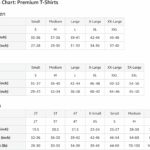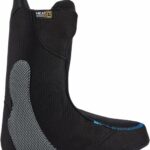When winter hits, and the mountains start to call, you may find yourself at the mercy of the burning question – “What Snowboard Bindings Should I Get?” Snowboarding is not just a game of skills and balance, it’s an equipment-intensive sport, and having the right pair of bindings is essential to sharpening your game. You need bindings that perfectly fit your style, boots, and board. While the wide array of choices can be overwhelming, fear not, this helpful guide will head you in the right direction to find the bindings that will make you king or queen of the snow-capped mountains.
Understanding Snowboard Bindings
As a snowboarder, whether you’re still learning or are already a pro, one of the most important equipment you need to consider investing in is a snowboard binding. It’s not something that just holds your boots and board together, but it’s the vital bridge in the transmission of energy from your muscles into snowboarding movements.
Definition of snowboard bindings
Snowboard bindings are critical components of the entire snowboarding set-up. They fasten your snowboarding boots to your snowboard, letting you slide down the mountain. They have different forms and features designed to provide you with control and comfort while snowboarding.
Role of snowboard bindings
A common misconception is that snowboard bindings are just for keeping your boot on the board, but their role goes much further than that. They also make a significant difference in gaining control and in mastering different snowboarding techniques. Also, they offer safety by ensuring that you stay attached to your board, reducing ankle and knee injuries.
Types of Snowboard Bindings
There are various types of snowboard bindings catering to specific snowboarding styles and preferences. Here’s a rundown of the most common types:
Strap-In Bindings
Strap-in bindings are the most common type in today’s market, offering excellent control. They feature two straps: a heel strap and a toe strap. They require more time to fasten than their step-in counterparts, but they allow for a customizable fit.
Step-In Bindings
Step-in bindings offer easiness to get into and out of, making them ideal for beginners. However, they may lack the tight fit and precise control that strap-ins provide, as they have no straps to adjust the fitment.
Rear Entry Bindings
Rear entry bindings offer a speedy entry system. The highback part of the binding folds down, allowing the boot to slide in quickly. While they provide an uncomplicated fastening mechanism, they don’t have as much customization control.
Hybrid Bindings
Hybrid bindings bring together the benefits of both strap-in and rear-entry bindings. They offer a traditional toe and heel strap system with the convenience of a rear-entry system, providing a balance between security, control, and ease of use.
Choosing the Right Size Snowboard Bindings
When it comes to snowboarding, having the right size binding is often as imperative as having the right size board and boots.
Binding Size vs Boot Size
Binding size corresponds to your boot size, not your board size. Ensure the size is perfect for your snowboarding boot size to prevent issues with control, comfort, and safety. Most binding manufacturers provide a size chart that translates binding size to boot size.
Correct Fitment of Bindings
When your bindings fit correctly, you’ll feel the difference in control and comfort. Make sure your boot gets in snugly and is secure. The heel should be held firmly, and your toes should align with the edge of the board but not hang over it.
Selecting the Appropriate Flexibility
The flexibility of a snowboard binding plays into the feel and responsiveness of the board. Flexibility varies depending upon your preference and snowboarding style.
Soft Flex Bindings
Soft flex bindings are forgiving and allow for more movement, which can be great for freestyle or park riding. They provide added comfort, but at the expense of reduced responsiveness at higher speeds.
Medium Flex Bindings
Medium flex bindings are versatile and are great for any riding style. They offer a balance of comfort and control, making them ideal for those who want both impressive responsiveness and comfortable riding.
Stiff Flex Bindings
Stiff flex bindings provide excellent responsiveness and control, but they may not offer much in terms of comfort. They’re ideal for advanced riders who demand precision control at high speeds or on challenging terrains.
Consideration of Riding Style
Your style of snowboarding plays a crucial role in choosing the right pair of snowboarding bindings. What works best for freestyle riders may not work perfectly for freeride or all-mountain riders.
Freestyle Riding
Freestyle riders need bindings with a soft to medium flex. This style takes place in man-made features like jumps, halfpipes, or rails where flexibility and maneuverability matter.
Freeride Riding
Freeride entails riding on any terrain that is not a groomed run. It requires more rigid bindings that offer a great deal of control and responsiveness.
All-Mountain Riding
All-mountain riders need versatile bindings. These riders often tackle both groomed runs and off-piste adventures, so a medium flex binding is an excellent choice.
Importance of Compatibility with Snowboards
Your bindings should be accurately compatible with your board, not just in size, but also in style and brands.
Matching Bindings with Snowboards
The width, flex, and style of your snowboard should match with your bindings. A narrow board goes well with small bindings while wide boards demand larger ones. Likewise, if you have a freestyle board, use flexible bindings, and for stiffer boards, use stiff bindings.
Compatibility Issues
It’s worth noting that not all bindings are compatible with all snowboards due to differing binding mounting systems. Always ensure to check the compatibility between your snowboard’s mounting system and bindings before purchasing.
Differences in Bindings for Beginners and Professionals
Your snowboarding experience level also influences the kind of bindings you should have.
Bindings for Beginners
For beginners, bindings with softer flex and more comfortable features are recommended. They’re more forgiving–making it easier to learn the basics of snowboarding.
Bindings for Intermediate Riders
Intermediate riders may prefer medium-flex bindings that offer both comfort and improved responsiveness. They’re versatile, which is beneficial as you explore your snowboarding style.
Bindings for Professional Riders
Professional riders usually go for stiff bindings because these provide precision control and quick responsiveness, necessary for tackling advanced terrains or speeds.
Materials and Construction of Bindings
Binders’ materials influence their weight, durability, and responsiveness.
Importance of Material
Lighter bindings enable quicker movements, while heavy ones offer greater stability. Also, the right material contributes to durability–they should withstand harsh conditions and fall impacts.
Durable Materials for Bindings
Bindings made from composite materials such as fiberglass-reinforced Nylon or Polycarbonate are durable and lightweight. High-end models might also include carbon fiber in the build, resulting in highly durable, stiff, and ultra-light bindings.
Price and Value of Snowboard Bindings
Price and value are often the deciding factor for many riders, but remember, the QUALITY should be the top-most priority.
Cost-effectiveness
In the long run, investing in a slightly expensive but durable, comfortable, and high-performing binding can be more cost-effective than buying a cheap one that wears down quickly or doesn’t optimize your performance.
High-End Bindings vs Budget Bindings
High-end bindings generally offer superior materials, advanced features, and customizability, ensuring comfort and performance. In contrast, budget bindings may not have high-end features, but they can still be great options once you know exactly what you need and don’t need in a binding.
Popular Brands of Snowboard Bindings
There are several reputable brands in the market, all offering their own unique takes on bindings.
Review of Top Brands
Brands like Burton, Union, and K2 are known for their reliable and innovative snowboard bindings, offering a wide range of designs for different riding styles and levels.
Comparative Analysis of Different Brands
When comparing different brands, take note of their defining technologies, material quality, product warranties, and customer reviews. Whether it’s a renowned brand or not, it’s important to find a binding that best serves your specific snowboarding needs and preferences.
Remember, there’s no single answer to the question “What Snowboard Bindings Should I get?”. It’s a personal decision based on various factors like riding style, skill level, preference, and even budget. It takes some research, but getting the right pair of bindings can incredibly enhance your snowboarding experience.
- What Snowboard Bindings Should I Get? - January 23, 2024
- What Size Screws For Snowboard Bindings? - January 23, 2024
- How To Snowmobile On Water? - January 23, 2024










